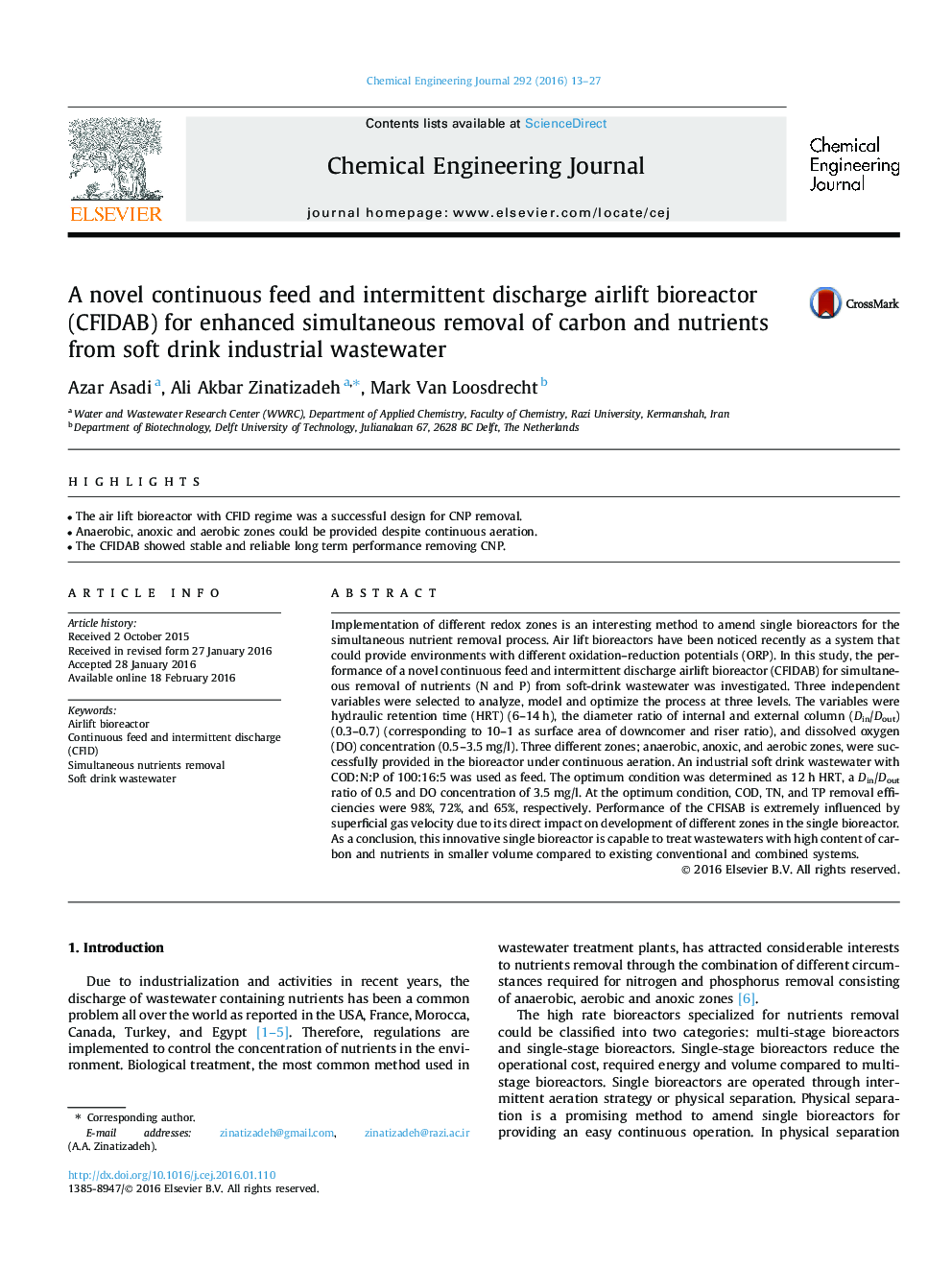| Article ID | Journal | Published Year | Pages | File Type |
|---|---|---|---|---|
| 145654 | Chemical Engineering Journal | 2016 | 15 Pages |
•The air lift bioreactor with CFID regime was a successful design for CNP removal.•Anaerobic, anoxic and aerobic zones could be provided despite continuous aeration.•The CFIDAB showed stable and reliable long term performance removing CNP.
Implementation of different redox zones is an interesting method to amend single bioreactors for the simultaneous nutrient removal process. Air lift bioreactors have been noticed recently as a system that could provide environments with different oxidation–reduction potentials (ORP). In this study, the performance of a novel continuous feed and intermittent discharge airlift bioreactor (CFIDAB) for simultaneous removal of nutrients (N and P) from soft-drink wastewater was investigated. Three independent variables were selected to analyze, model and optimize the process at three levels. The variables were hydraulic retention time (HRT) (6–14 h), the diameter ratio of internal and external column (Din/Dout) (0.3–0.7) (corresponding to 10–1 as surface area of downcomer and riser ratio), and dissolved oxygen (DO) concentration (0.5–3.5 mg/l). Three different zones; anaerobic, anoxic, and aerobic zones, were successfully provided in the bioreactor under continuous aeration. An industrial soft drink wastewater with COD:N:P of 100:16:5 was used as feed. The optimum condition was determined as 12 h HRT, a Din/Dout ratio of 0.5 and DO concentration of 3.5 mg/l. At the optimum condition, COD, TN, and TP removal efficiencies were 98%, 72%, and 65%, respectively. Performance of the CFISAB is extremely influenced by superficial gas velocity due to its direct impact on development of different zones in the single bioreactor. As a conclusion, this innovative single bioreactor is capable to treat wastewaters with high content of carbon and nutrients in smaller volume compared to existing conventional and combined systems.
